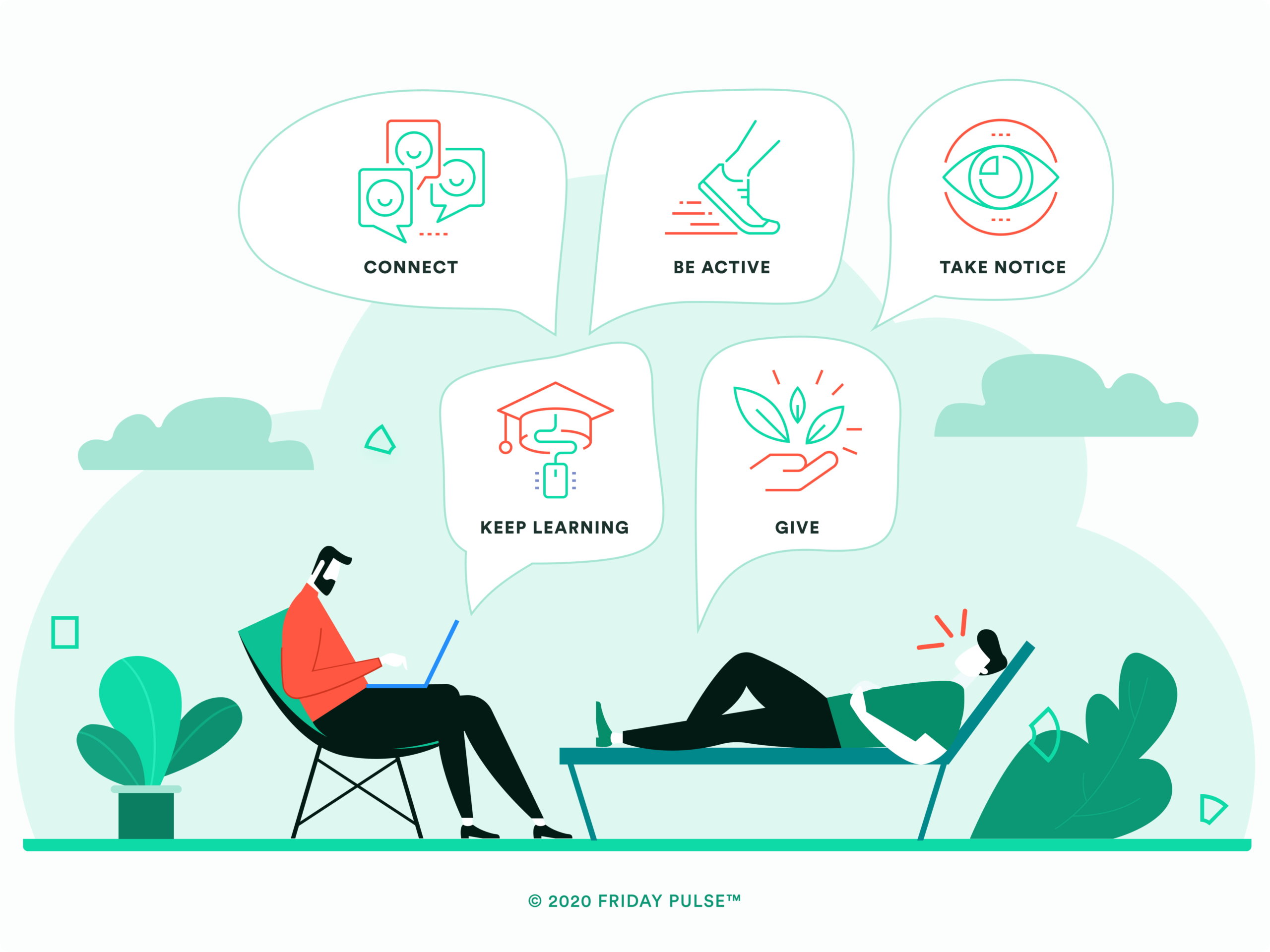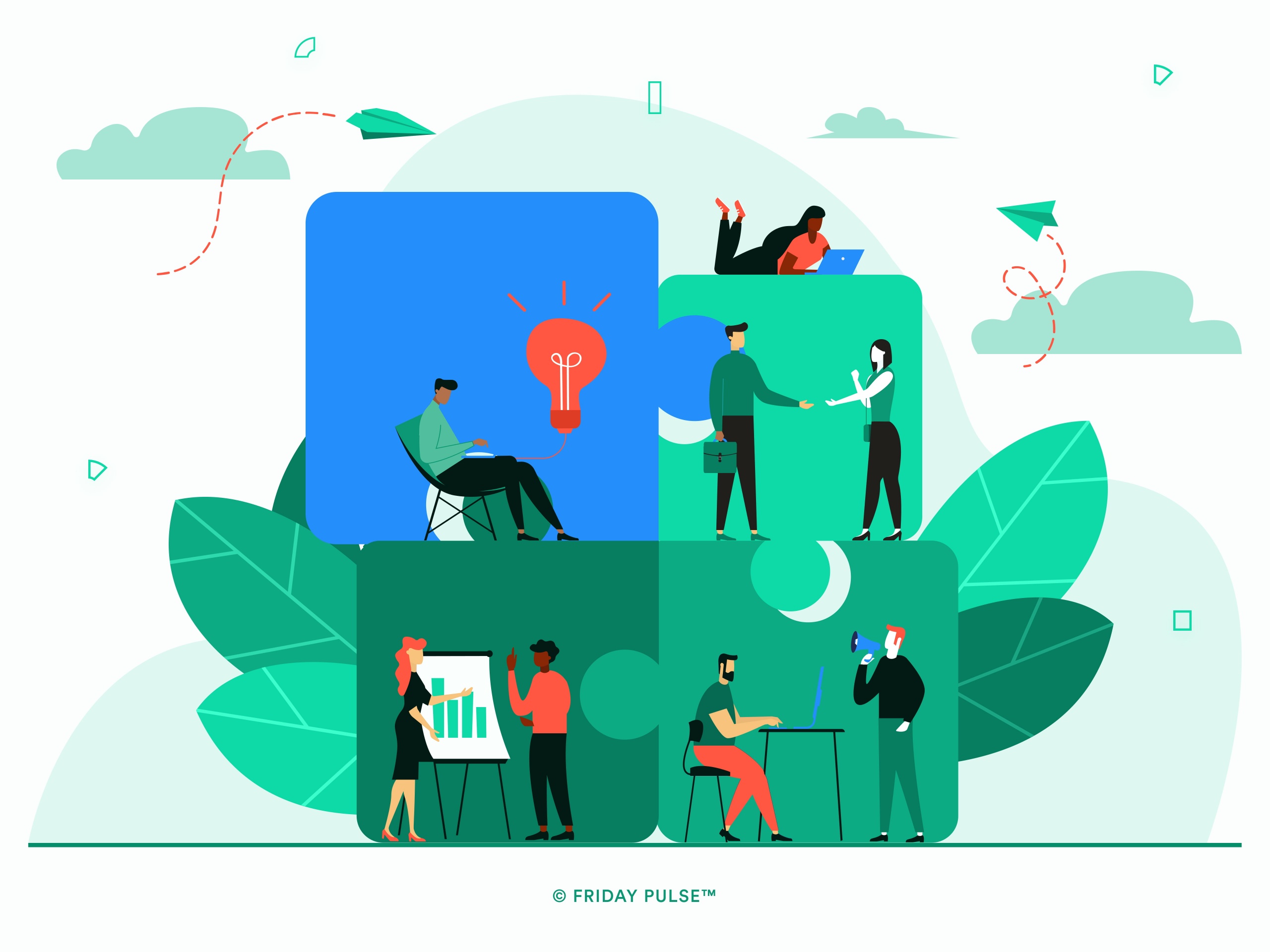This week is Mental Health Awareness Week. Mental health is a
critical part of our business. As you know, our purpose at Friday Pulse
is to improve wellbeing in the workplace. It’s our reason for being. In
the current COVID-19 era, employee wellbeing has grown from being a
‘nice to have’ to ‘a must-have’. In fact, it is reported almost 48% of
employers have improved their wellbeing strategies since the
beginning of the pandemic.
This week also provides an opportunity for us to reflect on The Five
Ways to Wellbeing — how we designed them and their legacy. They are
the precursor to The Five Ways to Happiness at Work. They are also
a project that we are proud of because of its significant contribution
to mental health awareness in the UK. Our work during this project would
eventually come to shape Friday Pulse, the direction we take and,
ultimately, who we are as a business.
We hope you’ll forgive us a little self-indulgence as we look back on
our history.
Some of the things you may not have known about The Five Ways to Wellbeing
12 years ago, the UK Government began to push for improved awareness
around mental health. It commissioned over 100 separate reports and
involved over 300 experts from a wide range of disciplines. During one
discussion, our CEO & Founder Nic Marks held a piece of fruit
in his hands and said, “We need the mental health equivalent of
five-a-day fruit and vegetables.”
And there began a new project for Nic and his long-term collaborator Dr.
Jody Aked, Client Success Director at Friday Pulse. The premise? A
guide for ordinary people to take actions in their day-to-day lives that
would improve their wellbeing. After extensive research and design, and
the process of creating a long list of evidence-based actions, The
Five Ways to Wellbeing were born:
- Connect…
- Be active…
- Take notice…
- Keep learning…
- Give…
As well as a report, these five ways were also printed on
postcards and distributed freely. You’ll notice that after each
phrase/word there is a series of ellipsis (…). In contrast to most
messaging from the government at the time, which tended to be
prescriptive — telling people what to do— the Five Ways were an
invitation to try doing something different. It invited people to
connect with others, go for a walk or run, be curious, learn new things,
or do something nice for someone else.
It was important for Jody and me to start where people were. These
were things that people could do that didn’t cost money and were in
their control.
comments Nic.
That simplicity is especially poignant today when we are staying at home
because of COVID-19. Although we currently don’t have the freedom that
we are used to, we can still use the Five Ways to improve our
wellbeing.
An exercise you can do yourself is to take some time to reflect on each
of the five ways in turn. Think about what you could do that help you
connect, be active, take notice, keep learning or give. These are all
very healthy activities for us to do, and they will help us feel more
spontaneous and alive during these difficult times.
The legacy of the Five Ways
Because the Five Ways began as a government project, it ultimately meant
that the Crown owned it — officially the Queen — and because of that,
anyone could use it.
People could adapt them, and they could travel as an idea. That’s the
real strength of the Five Ways,
said Nic.
And travel they did.
Over the last 12 years, some form of the Five Ways has been used all
around the world, across cultures. A Chinese New Year event in
Liverpool. An LGBTQ guide. A Norwegian kindergarten. A Maori
translation in New Zealand. Because no one had to ask for permission to
use it, communities have picked it up and used. They have been an
important part of a growing global awareness that people’s mental health
matters just as much as their physical health, and this means mental
health at work too.
In the last three months, the COVID-19 pandemic has hugely accelerated
this process. There is wide recognition that this is not only a health
crisis but also a mental health one too. 42% of organisations now
have plans to alter their benefit programmes, and 28% of
employers are actively taking measures to reduce employee anxiety.
Politicians, public health officials and business leaders are all
acutely aware that there are unprecedented stresses and strains on
people. Tech companies like Google and Facebook are allowing their
employees to work from home for the rest of the year, or even
indefinitely. Social media giant Twitter told its 5,000 employees last
week that they would have the option of working remotely permanently.
The Five Ways, even though they were created over a decade ago, are
still out there being used. Both the content and the style of their
messaging is recognisable in the most recent public mental health advice
from the NHS.
Ultimately, this is the biggest compliment – to have people use it.
That brings us the most joy.
That desire for utility is what drives the founders of Friday Pulse.
From the Five Ways, the first product Friday designed was
the Happiness at Work Survey. It had 40 questions, and when Nic apologised to an
organisational consultancy they were working with for how complicated it
was they said, “Excellent, we can charge more money.”
That was the wrong take. I immediately knew we had more work to do as
we wanted to make something simple and easy to understand. And most of
all, it had to be transformative.
said Nic.
Behind the design of the Friday Pulse platform is a sincere desire to
empower senior and team leaders to do a good job. Much like how the Five
Ways were designed for people to take control of their own lives and
take action, Friday Pulse is for companies to take control of their own
culture, and look
after their employees’ mental health by regularly looking at their own
wellbeing data and acting on the insights it provides.
Today, the Five Ways are the Friday Way.
You don’t need an expensive consultant. You just need good data so
you can see for yourself what you need to do.
Here to help
During this pandemic period, we are committed to helping businesses
build better work cultures and improve employee morale. That’s why, we
are continuing to offer companies and teams (50 – 1,000
employees) free access to our Friday Pulse people platform for
12 weeks.
For more information on how we can help your organization weather the
crisis please contact our Head of Helping People, Clive Steer
at clive@fridaypulse.com



